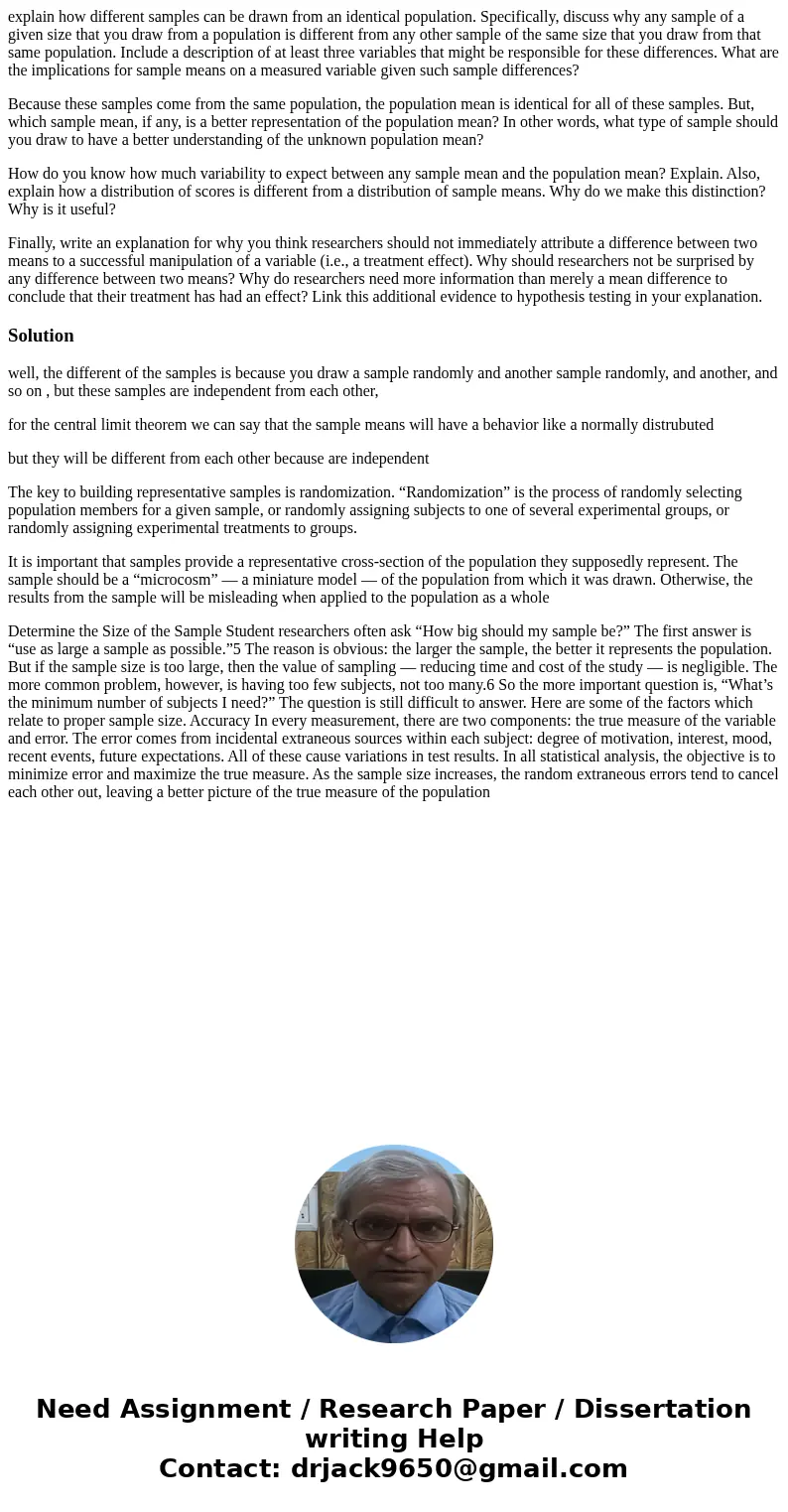explain how different samples can be drawn from an identical
explain how different samples can be drawn from an identical population. Specifically, discuss why any sample of a given size that you draw from a population is different from any other sample of the same size that you draw from that same population. Include a description of at least three variables that might be responsible for these differences. What are the implications for sample means on a measured variable given such sample differences?
Because these samples come from the same population, the population mean is identical for all of these samples. But, which sample mean, if any, is a better representation of the population mean? In other words, what type of sample should you draw to have a better understanding of the unknown population mean?
How do you know how much variability to expect between any sample mean and the population mean? Explain. Also, explain how a distribution of scores is different from a distribution of sample means. Why do we make this distinction? Why is it useful?
Finally, write an explanation for why you think researchers should not immediately attribute a difference between two means to a successful manipulation of a variable (i.e., a treatment effect). Why should researchers not be surprised by any difference between two means? Why do researchers need more information than merely a mean difference to conclude that their treatment has had an effect? Link this additional evidence to hypothesis testing in your explanation.
Solution
well, the different of the samples is because you draw a sample randomly and another sample randomly, and another, and so on , but these samples are independent from each other,
for the central limit theorem we can say that the sample means will have a behavior like a normally distrubuted
but they will be different from each other because are independent
The key to building representative samples is randomization. “Randomization” is the process of randomly selecting population members for a given sample, or randomly assigning subjects to one of several experimental groups, or randomly assigning experimental treatments to groups.
It is important that samples provide a representative cross-section of the population they supposedly represent. The sample should be a “microcosm” — a miniature model — of the population from which it was drawn. Otherwise, the results from the sample will be misleading when applied to the population as a whole
Determine the Size of the Sample Student researchers often ask “How big should my sample be?” The first answer is “use as large a sample as possible.”5 The reason is obvious: the larger the sample, the better it represents the population. But if the sample size is too large, then the value of sampling — reducing time and cost of the study — is negligible. The more common problem, however, is having too few subjects, not too many.6 So the more important question is, “What’s the minimum number of subjects I need?” The question is still difficult to answer. Here are some of the factors which relate to proper sample size. Accuracy In every measurement, there are two components: the true measure of the variable and error. The error comes from incidental extraneous sources within each subject: degree of motivation, interest, mood, recent events, future expectations. All of these cause variations in test results. In all statistical analysis, the objective is to minimize error and maximize the true measure. As the sample size increases, the random extraneous errors tend to cancel each other out, leaving a better picture of the true measure of the population

 Homework Sourse
Homework Sourse